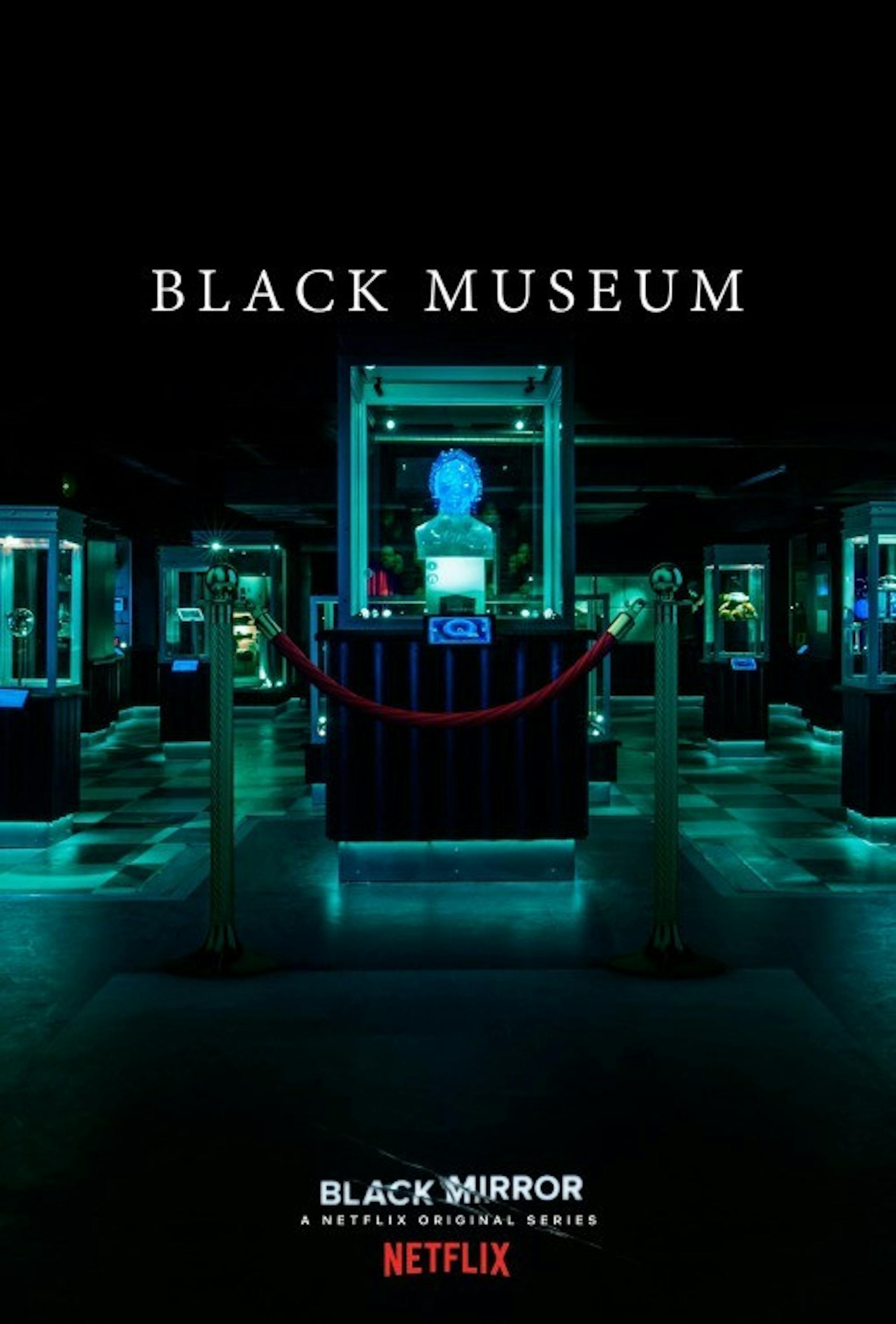“The over-riding fear is that cultural, ethnic and racial difference will be continually commodified and offered up as new dishes to enhance the white palate – that the Other will be eaten, consumed, and forgotten.”— bell hooks, “Eating the Other: Desire and Resistance” (1992).
By the end of season four, episode six of "Black Mirror" (2011–), Rolo Haynes (Douglas Hodge) has been replaced by Nish (Letitia Wright) as the episode’s narrator. The episode’s storytelling nexus switches its positionality from the perspective of a white man to that of a black woman — relinquishing Haynes’ authorial hold on the story-within-the-story and repositioning Nish as a character with narrative agency.
This is key — from the outset of the episode, Nish is depicted as the unsuspecting traveler preyed upon by the seemingly lecherous Rolo, purveyor of macabre technology at the aptly named “Black Museum." Though each of his anecdotes is haunting in its overtones of both narrative and real-world inevitability, each one serves as a filler for the forthcoming action. Rolo, like his stories, is a red herring. They are stories rooted in the narrative arc that has made "Black Mirror" as popular a show as it is today; technical advances force both viewers and characters within the vignettes to grapple with our Icarian pursuit of an asymptotic omnipotence as it drives us further away from each other, deeper into despair.
The despair of "Black Mirror" has always been attached to a somewhat whitewashed understanding of despair — themes allude to and include reference to the nuanced despair of the systematically othered ("The Martian," "Crocodile," "Men Against Fire") without unequivocally critiquing the status quo. Alas, "Black Museum" bucks that trend. This other, othered despair is approached, tackled, wrestled to the ground and exposed for the world to see in a striking image during the episode’s final crescendo.
Rolo’s last story is one about Clayton (Babs Olusanmokun), a black man accused and convicted of murdering a woman reporter. A virtual projection of Clayton’s consciousness sits on the floor of a jail cell, to be put to death over and over again by electric chair.Women torture Clayton’s projection. Men torture Clayton’s projection. After sentencing Clayton to another death, each of their faces, like Rolo’s, features a stunned smile. After the visitors have delighted themselves with their torture, they receive a copy of Clayton’s mind on a keychain: “Stuck forever in that beautiful moment of agony. Always on. Always suffering.” Those smiles are indictment enough against the consumption of black pain as spectacle, but "Black Mirror" takes the critique even further.
Nish, revealed to be a self-righteous avenger, tells us the true story about Clayton: that he was falsely accused, that his family cared and fought for him and that the museum, wracked with the financial burden of bad press, began to serve a seedier clientele. After the protests hit, “Who was left?” Nish asks. Her voiceover gives way to a haunting visual — a white man in austere dress pulls the lever, condemning Clayton to another endless death and proceeds to touch himself and unbuckle his belt. The insinuation is clear: This man seeks to get off on the experience of watching Clayton’s misery. Though the episode may separate this man from the families and day-trippers by virtue of Rolo’s embellished story and Nish’s vindictive one, they are both delighting in the same death. This man is an auxiliary for the most biting claim posed by "Black Museum": Dominant, heteronormative white culture gorges itself and gets off on the despair, suffering and deaths of black people. Here, black suffering becomes a potent cultural aphrodisiac; "Black Mirror" pathologizes white culture with a fetish for the deaths and re-deaths of black people.
In 'Black Mirror's' 'Black Museum,' black death is a white aphrodisiac

A promotional poster for Black Mirror (2011–) is pictured.





